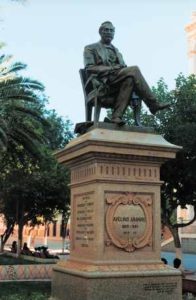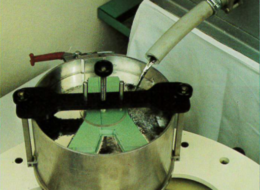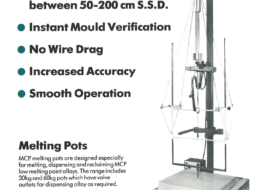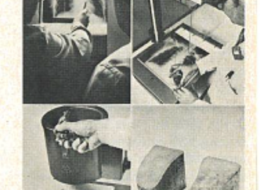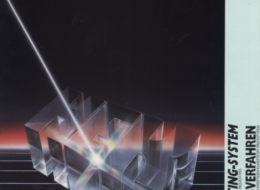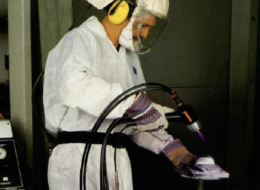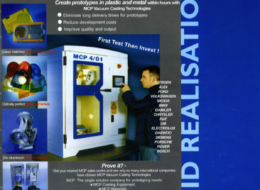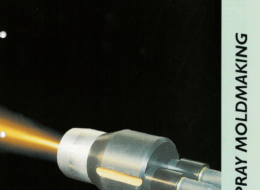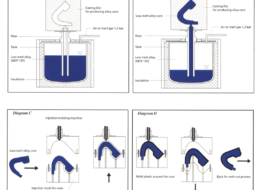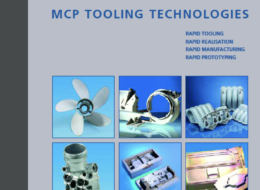This website is devoted to the technical history of long established small family owned group of companies : Mining and Chemical Products ( MCP).
Originally a mining company in Bolivia, owned by the Aramayo Family which had a registered office in London as long ago as 1890. MCP , a metals producer, found a multitude of applications in Europe for its rare metals and foremost for its low melting point alloys which are completely re-cyclable for further use.
The management was exceptionally forward looking, creative and interested in all new developments particularly to do with mould and press tool making and generally with quicker methods of manufacture.
Developments and Achievements
In the 50s and 60s MCP´s engineers became heavily involved in solving the problems of machining complex jet engine turbine blades, and bending thin walled fuel tubing for aircraft . Also in finding quick sheet metal forming solutions , rapid tooling, for producing quick plastic and metal components using the MCP metal spray mould technology.
MCP´s metal spray technology was improved distinctively by a joint venture with TAFA Inc. USA. The TAFA arc spray equipment offered important advantages , such as machine reliability, quicker mould making for large components and more durable mould surfaces v . MCP´s know-how was also used to improve and develop equipment to create perfect radiation shields for cancer therapy applying the energy absorbing properties of MCP 70 lowmelt alloy – later a standard technology to be used worldwide in Radiotherapy clinics.
In the late 80s Stereolithography ( SLA ) was introduced by 3-D Systems, USA. This process, using a 3-D data file, exact models /patterns could be produced within hours in a polymer material. This process combined with MCP´s Vacuum Casting System using MCP´s own silicone rubber tooling technology, enabled multiple prototype mouldings to be produced in a large range of thermoplastic similar materials which met the requirements of design engineers worldwide. The cost reduction compared to standard machining technologies was as high as 98% . During this period , the phrase “ Rapid Prototyping “ was coined and later “Additive Manufacturing “ . This combination of processes created internationally, a speed and quality revolution in automotive design.
1998 the new MCP Metal Part Casting Process was coupled to these two processes. Using very accurate wax vacuum castings / mouldings, MPC reduced the production of thin walled, lost wax metal investment castings to only 3 days´, starting from a 3-D data file.
The MCP Vacuum Casting Process was later modified and improved to cast extremely durable, low cost Nylon PA 6 mouldings.
Patent:“Method and Device for Making Moulds and Tools ( WO/1998/015372)“.
MCP , was leading participant in the EUsponsored Research project “Brite EuramRapitool BRE20325”. Aims: to utilize 3-D printed Stereolithography models to develop rapid mould production techniques. MCP achieved best results among 7 European participants using moulds from MCP low melt alloys to realize 250 PP injection mouldingswithin 3 days.
3-D metal printing technology , Selective Laser Melting ( SLM ) was the last process to be introduced to MCP´s international customer group. MCP´s 3-D printer was the very first in the field to operate with any and all types of pure metal powder – enabling the automated and quick production of completely dense metal components ..
The MCP Group was finally split and sold in 2007 from which the metals section became https://www.5nplus.com/a Canadian Co . based in Lübeck, Germany
At the same time the Rapid Prototyping – Additive Manufacturing Division became SLM Solutions https://slm-solutions.com also based In Lübeck
1974: MCP 70 Technology for creating radiation shields rapidly : MCP introduced a rapid system , simple and effective ,afor producing individual shielding blocks for patient radiotherapy treatment. The advantages… [Continue Reading]
The MCP 70 MK III system meets the demand of treatment centres for greater accuracy in radiation shielding. Using a heated wire system enables accurate moulds to be cut from… [Continue Reading]
This system has been specifically designed to be used in conjunction with MCP 70 low melting point alloy for producing the shielding blocks required during radiation treatment. The system comprises a… [Continue Reading]
4 pages, english and german (02/1989) about the MCP-Vacuum-Casting-System.
For years experts have recognized the advantage of metal spraying of moulds with MCP Alloys. Long delivery times for moulds, increasing costs and the necessity to check new plastic products… [Continue Reading]
Create prototypes in plastic and metal within hours with MCP Vacuum Casting Technologies. Elemente long delivery times for prototypes Reduce development costs Improve quality and output Original published in 2001
MCP/TAFA makes a wide range line of energy-efficient thermal spray coating systems for a wide spectrum of industries. Everything from manually operated units to a totally automatic turnkey systems are… [Continue Reading]
Fusible Core Technology with MCP Low Melt Alloys “Make The Impossible” Properties and Uses of MCP Low Melting Point Alloys explained in the 27-sided Powerpoint Presentation with examples of MCP… [Continue Reading]
14 Pages, english (08/2007) with an overview of all processes.
